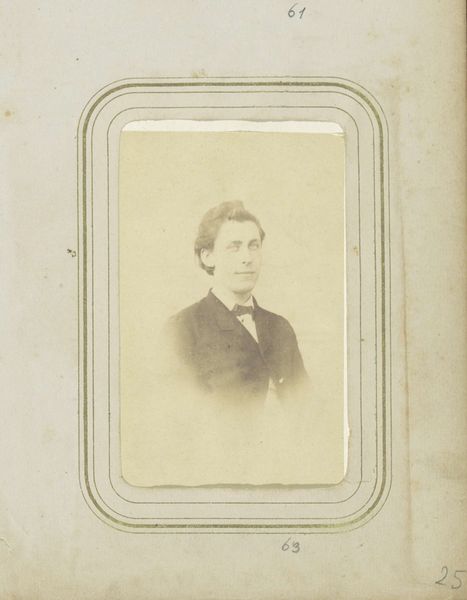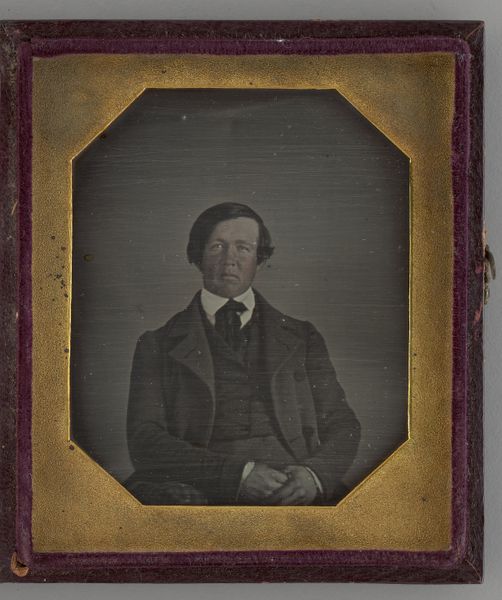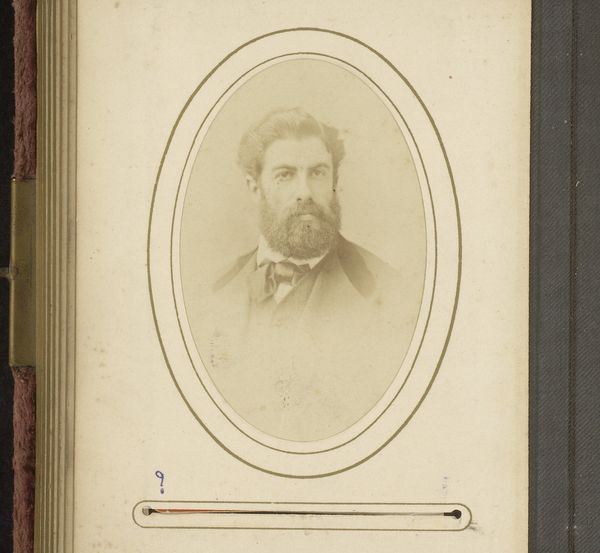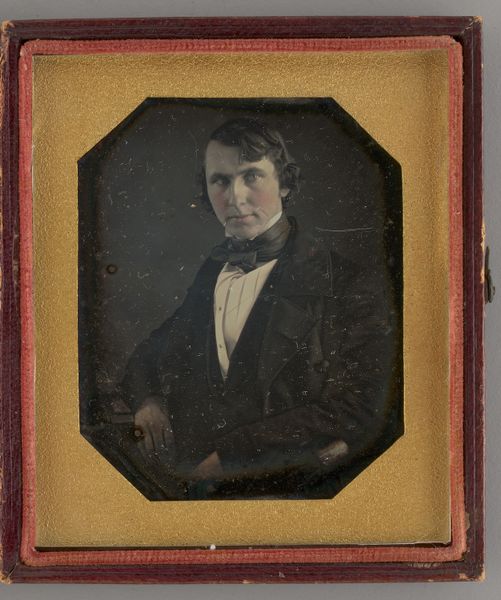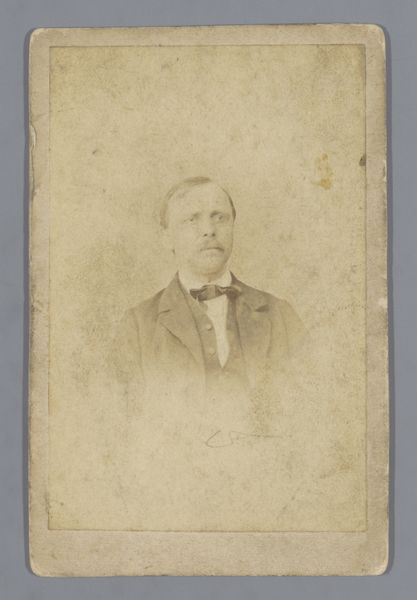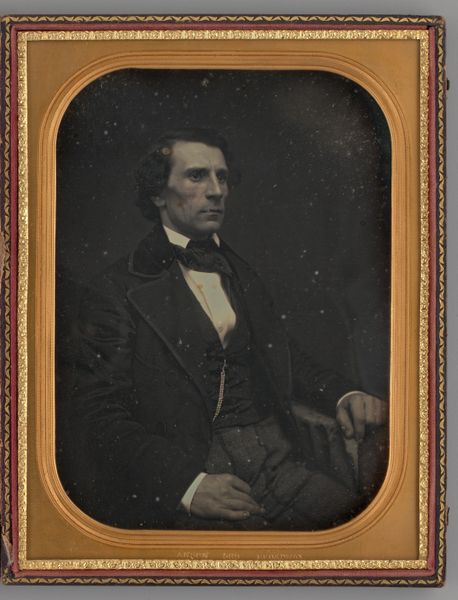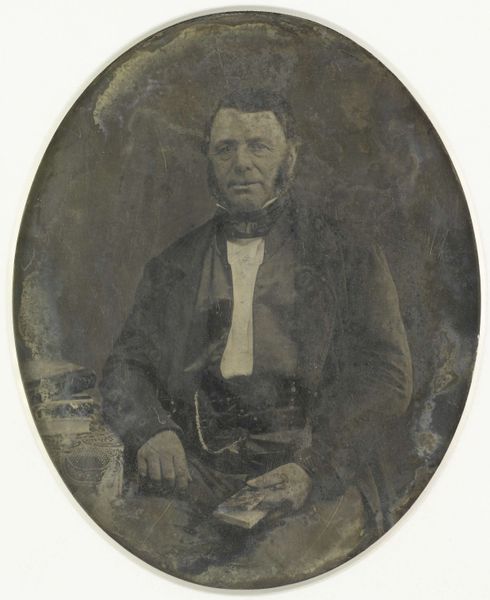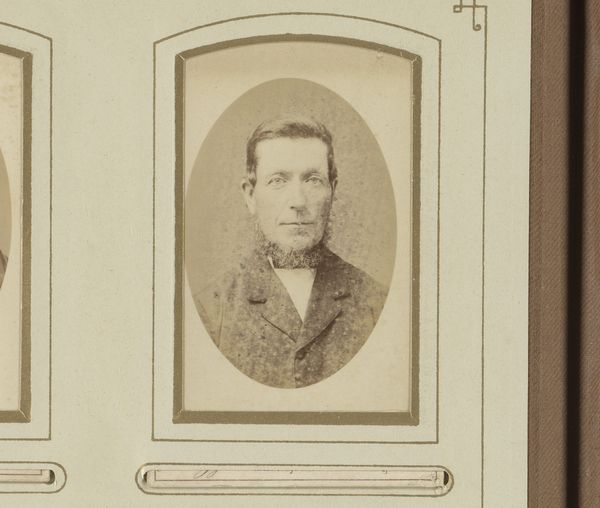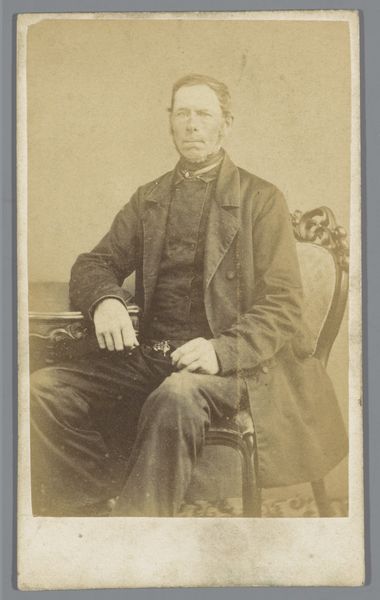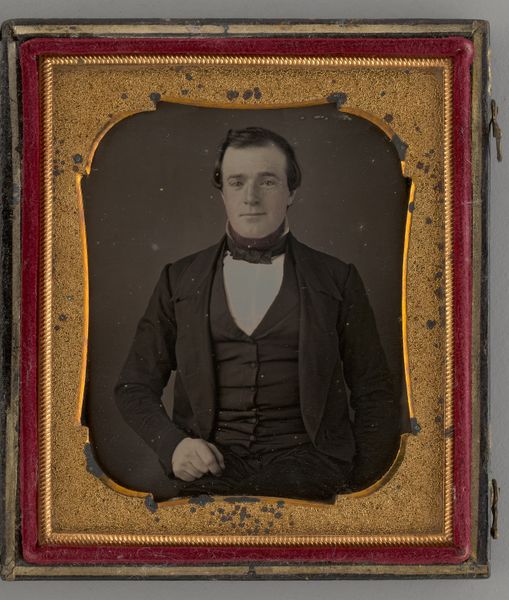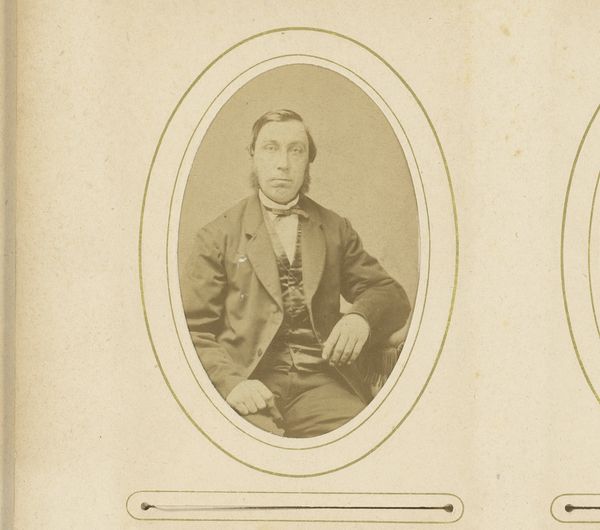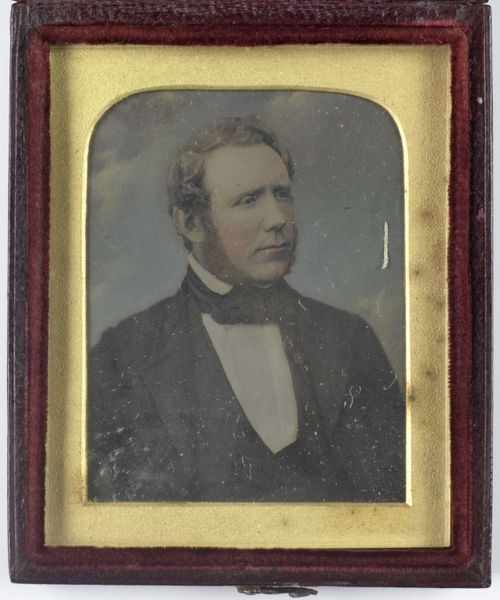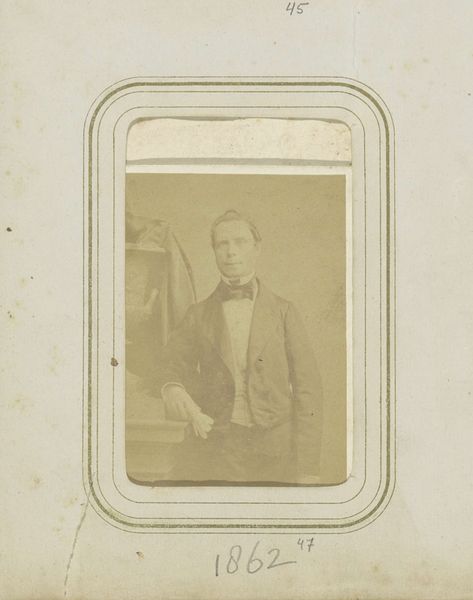
print, daguerreotype, photography
#
portrait
# print
#
daguerreotype
#
photography
#
portrait art
#
realism
Dimensions: 19 × 13.7 cm (image, sight)
Copyright: Public Domain
Curator: This is an untitled portrait of a man, created around 1850. The medium is daguerreotype, an early photographic process. What strikes you about it? Editor: Immediately, a sense of formality. He’s dressed impeccably, but his expression suggests something more than just adherence to social norms. I sense a guardedness, perhaps? Curator: The daguerreotype was quite the innovation, wasn't it? Suddenly, the burgeoning middle class could afford portraits. Though I suspect this gentleman may have been a little more well-to-do! It's a departure from the exclusive domain of painted portraits for the aristocracy. Editor: Absolutely, it democratized image-making. Yet, access doesn't equal representation. Who got to decide whose likeness mattered? Whose stories were deemed worthy of preservation? Looking at him now, what aspects of his identity are visible, and what are deliberately obscured? His race? His class aspirations? Curator: Photography's claim to "truth" is certainly a loaded concept. I do wonder about his profession; that stoicism reminds me of a banker perhaps? Or a politician from Illinois? A solid citizen type. Editor: Maybe, but that kind of reading relies on stereotypes. A banker or politician during this period may also have been a land owner and oppressor, implicated in systemic injustices of the time. Can we separate the image from its socio-political context? The shiny golden borders even hint at this era's obsession with material success and class aspirations, mirroring some very questionable value systems. Curator: Point taken. The very process required immense patience, hours of stillness and posing, the absence of movement! That also informed the subject's affect in profound ways. One may forget how miraculous these early photos felt! Editor: True. Despite that sense of miraculous creation, the photographic process reinforced power structures of the time. But also, here he is today: looking out across generations. Curator: Absolutely! To be seen at all—an opportunity afforded by technological advance, even if born from inequality, does not make one's existence less profound. Editor: I agree. So perhaps that formality becomes a shield. He stands, preserved, complex, challenging us to understand him and the world he represents beyond surface appearances. Curator: Nicely put! It’s an intriguing question posed by what once was seen as “truthful likeness”. Thanks for untangling its complexities with me! Editor: And thank you, as always, for sharing such insight and prompting such important discussions.
Comments
No comments
Be the first to comment and join the conversation on the ultimate creative platform.
